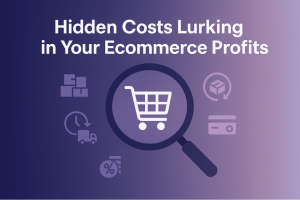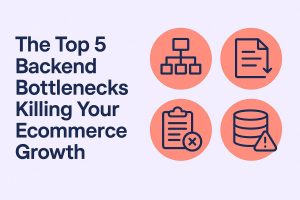In recent years, sustainability has become more than just a trend—it’s a necessity. As businesses across industries strive to reduce their environmental footprint, e-commerce companies are also stepping up to the challenge. Building an eco-friendly online store isn’t just about appealing to environmentally conscious consumers; it’s about making a meaningful commitment to the planet. In this article, we’ll explore tips and strategies for creating a sustainable e-commerce business, from eco-conscious product sourcing to reducing carbon emissions.
1. Embrace Sustainable Packaging
Packaging is one of the biggest contributors to waste in the e-commerce industry. To minimize your environmental impact, opt for sustainable packaging materials such as recycled cardboard, biodegradable plastics, or even innovative alternatives like mushroom packaging. Additionally, consider reducing the size of your packaging to minimize excess material and shipping space, which can help lower transportation emissions.
Implementing sustainable packaging solutions not only helps the environment but also provides an opportunity to showcase your commitment to sustainability. You can communicate your eco-friendly packaging choices on your website and marketing materials, allowing customers to see that your brand aligns with their values.
Amazon is itself working towards using more sustainable packaging materials. They have introduced initiatives like “Amazon Second Chance” to encourage customers to recycle packaging materials
2. Choose Eco-Conscious Product Sourcing
Where and how you source your products can have a significant impact on your store’s environmental footprint. Look for suppliers and manufacturers that prioritize sustainable practices, such as using organic or recycled materials, minimizing water usage, and reducing energy consumption. Certification from reputable organizations like Fair Trade or the Forest Stewardship Council can also help ensure that your products meet high environmental and ethical standards.
By partnering with eco-conscious suppliers, you can create a product lineup that resonates with environmentally conscious consumers. Highlight the sustainable attributes of your products, such as their recycled content or organic certifications, to attract and engage this growing customer segment.
3. Optimize Your Supply Chain
Streamlining your supply chain can help reduce transportation emissions and minimize waste. Consider consolidating orders to reduce the number of shipments and choose transportation methods with lower carbon footprints, such as rail or sea freight instead of air freight. Collaborating with local suppliers whenever possible can further reduce transportation distances and support the local economy.
Additionally, implementing inventory management systems and demand forecasting tools can help ensure that you maintain optimal inventory levels, reducing the risk of overproduction and waste. By optimizing your supply chain, you can not only minimize your environmental impact but also improve operational efficiency and cost-effectiveness.

4. Implement Energy-Efficient Practices
From powering your website to lighting your warehouse, energy consumption is a significant consideration for any e-commerce business. Invest in energy-efficient technologies and practices, such as LED lighting, smart heating and cooling systems, and renewable energy sources like solar panels. Additionally, consider optimizing your website for energy efficiency by reducing unnecessary animations, compressing images, and utilizing efficient coding practices.
Monitoring and tracking your energy consumption can help identify areas where you can make improvements. Set energy reduction goals and regularly assess your progress to ensure that you are continuously working towards minimizing your energy usage.
5. Encourage Sustainable Behavior Among Customers
Empower your customers to make environmentally friendly choices by providing information and incentives for sustainable behavior. Offer recycling programs for packaging materials, provide tips for reducing waste, and highlight the environmental benefits of your products. Consider implementing a carbon offset program where customers can voluntarily offset the emissions associated with their purchases by supporting renewable energy projects or tree planting initiatives.
Moreover, consider incorporating sustainability into your marketing and customer engagement strategies. Use social media campaigns, blog posts, and newsletters to educate your customers about the importance of sustainability and the positive impact they can make by supporting eco-friendly businesses. By involving your customers in your sustainability initiatives, you create a sense of community and shared responsibility.
TikTok has a platform where users can raise awareness about sustainability and environmental issues. Creators share content promoting environmentalism, climate activism, and sustainable living.
6. Educate and Advocate
As an e-commerce business, you have a platform to educate your customers about environmental issues and advocate for positive change. Use your website, blog, and social media channels to raise awareness about sustainability topics, share tips for living more eco-consciously, and highlight the importance of supporting environmentally responsible businesses. Collaborate with like-minded organizations and participate in sustainability initiatives to amplify your impact.
By positioning your brand as a thought leader in sustainability, you can attract customers who are passionate about making a difference. Cultivate a sense of transparency and authenticity in your communications, demonstrating your commitment to sustainability through tangible actions and measurable results.
Conclusion
Building an eco-friendly online store requires a multifaceted approach that encompasses everything from sustainable packaging to energy-efficient practices and customer education. By prioritizing sustainability in every aspect of your business, you can not only reduce your environmental footprint but also appeal to an increasingly environmentally conscious consumer base. Remember, sustainability isn’t just a trend—it’s a commitment to creating a better future for our planet and future generations.
By following these strategies and incorporating sustainable practices into your e-commerce business, you can contribute to a greener and more eco-friendly future. Embracing sustainability not only benefits the planet but also positions your brand as a responsible and forward-thinking business. Start implementing these tips today and make a positive impact through your eco-friendly online store.




